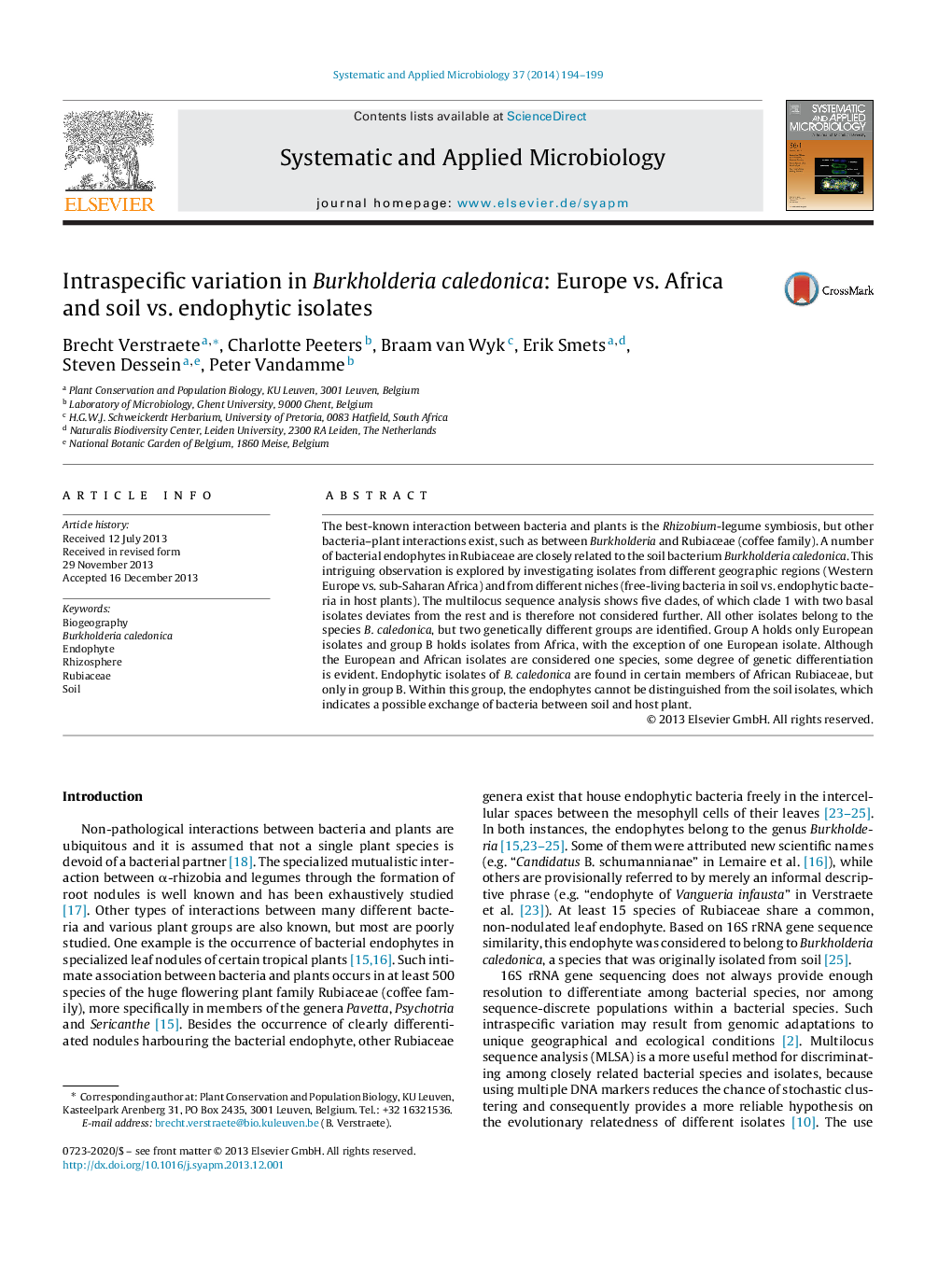| Article ID | Journal | Published Year | Pages | File Type |
|---|---|---|---|---|
| 2062953 | Systematic and Applied Microbiology | 2014 | 6 Pages |
The best-known interaction between bacteria and plants is the Rhizobium-legume symbiosis, but other bacteria–plant interactions exist, such as between Burkholderia and Rubiaceae (coffee family). A number of bacterial endophytes in Rubiaceae are closely related to the soil bacterium Burkholderia caledonica. This intriguing observation is explored by investigating isolates from different geographic regions (Western Europe vs. sub-Saharan Africa) and from different niches (free-living bacteria in soil vs. endophytic bacteria in host plants). The multilocus sequence analysis shows five clades, of which clade 1 with two basal isolates deviates from the rest and is therefore not considered further. All other isolates belong to the species B. caledonica, but two genetically different groups are identified. Group A holds only European isolates and group B holds isolates from Africa, with the exception of one European isolate. Although the European and African isolates are considered one species, some degree of genetic differentiation is evident. Endophytic isolates of B. caledonica are found in certain members of African Rubiaceae, but only in group B. Within this group, the endophytes cannot be distinguished from the soil isolates, which indicates a possible exchange of bacteria between soil and host plant.
